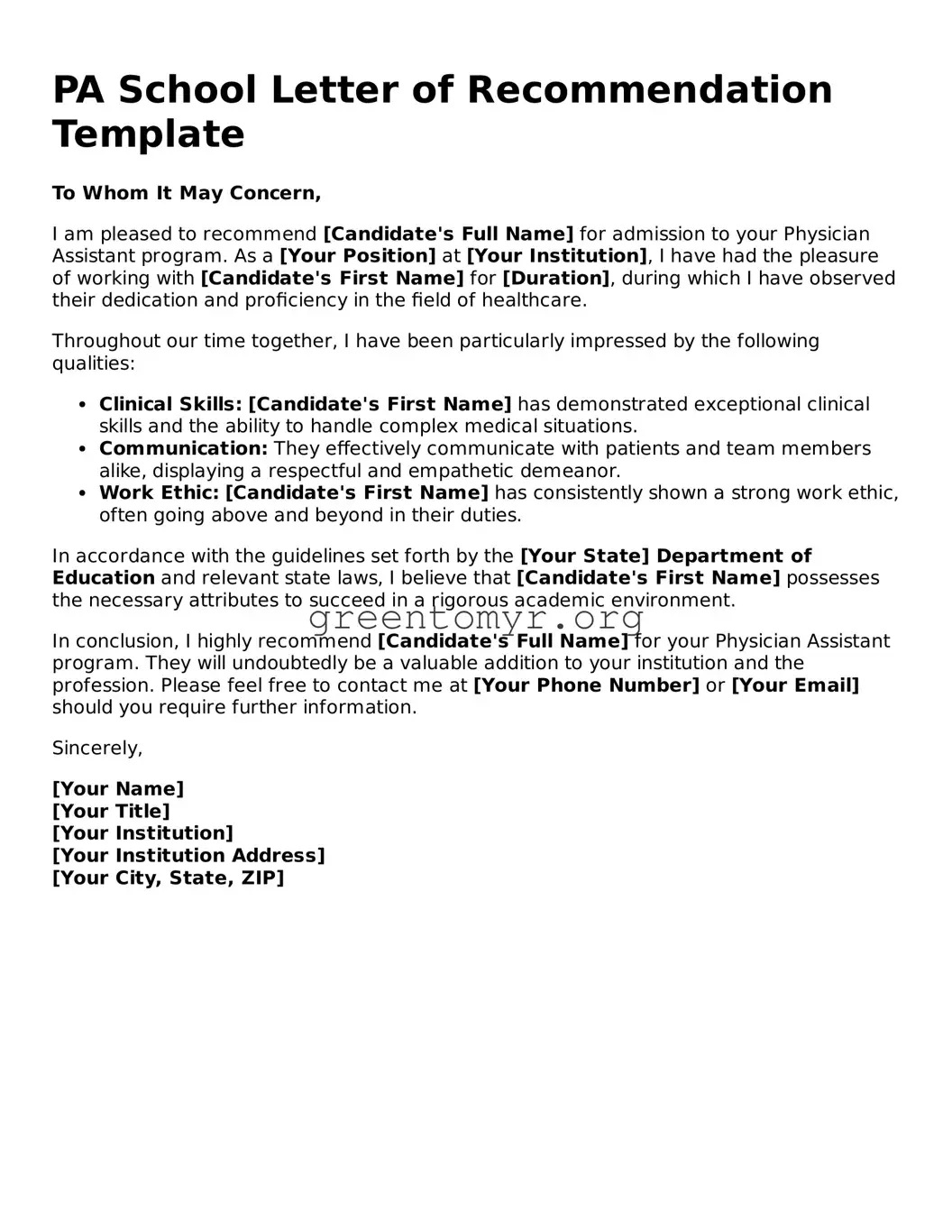Filling out the PA School Letter of Recommendation form may seem straightforward, but there are several common pitfalls that applicants should avoid. The first mistake people make is neglecting to choose the right recommender. Selecting someone who lacks familiarity with your skills and experiences can detract from the recommendation’s impact. It’s essential to choose a person who can provide specific examples and insights into your qualifications for the program.
Another frequent error is failing to communicate the deadline clearly. Recommenders often have many responsibilities, and if they are not aware of the submission timeline, they might miss the deadline. Applicants should ensure their recommenders know when the letter is due to avoid added stress and potential delays.
Many applicants overlook the importance of providing context for their recommender. Without a personal note explaining why you are pursuing a PA program and your relevant experiences, the letter may lack the depth it needs. This context helps recommenders tailor their letters more effectively to the PA School’s requirements.
Additionally, some people forget to follow up with their recommenders. A simple reminder—a week or two before the due date—can be incredibly helpful. This gentle nudge shows appreciation for their effort and ensures that your recommendation will be submitted on time.
It is also a mistake to assume that the recommender understands the specifics of the PA School's application process. Each program may have different expectations, and it’s vital to provide any necessary details. Sharing guidelines or examples of what the school values in applicants can help the recommender write more effectively.
Another common misstep involves neglecting to review the recommendation form oneself. Before submission, applicants should ensure all required sections have been filled out completely. Missing information can lead to delays or a negative impression on the admissions committee.
Some individuals fail to express gratitude after the letter has been submitted. A simple thank-you note can go a long way in maintaining a positive relationship with the recommender, especially if you ask for future recommendations down the line.
Another important detail often overlooked is the information given to the recommender about how to submit the letter. If an online submission process is involved, providing clear instructions helps eliminate confusion, ensuring a smooth submission experience.
Many applicants focus too much on rigid qualifications, forgetting to communicate their personal story. Adding personal insight or anecdotes that showcase resilience, dedication, and humanity can make the letter stand out. A strong recommendation transcends mere qualifications and touches on impact and character.
Finally, failing to proofread the recommendation request itself can also lead to issues. Spelling mistakes, unclear questions, or vague guidelines can confuse the recommender. Taking a moment to review these details ensures that your request is clear, professional, and respectful of their time.
